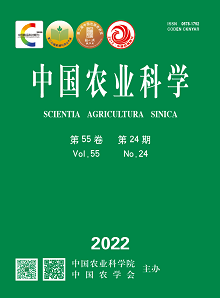【Objective】 Root is an important organ for maize to obtain water and nutrients, and a developed root structure is the key to maximum maize yield potential, which is currently an important issue to be solved in maize cultivation research. Ethylene- chlormequat-potassium and nitrogen application can affect the development of the maize root system. The aim of this study was clarify the effects of ethylene-chlormequat-potassium on the construction of summer maize root morphology and yield under different nitrogen application rates, so as to provide the theoretical and technical basis for the improvement of high yield and efficient cultivation management and rational fertilization of maize. 【Method】In 2019 and 2020, the field experiments were carried out in Daliudian village, Yanjiao town, Langfang city, Hebei province, and Shunyi Experimental Base, Chinese Academy of Agricultural Sciences, Shunyi district, Beijing, respectively, using maize single cross Yudan 9953 as experimental material. A split-zone experimental design was used, with the ethylene-chlormequat-potassium treatment (ECK) and the clear water control (CK) as the main zones, and the six nitrogen levels of 0 (N0), 96 (N96), 132 (N132), 168 (N168), 204 (N204) and 240 kg·hm-2 (N240) as the secondary zones, aiming to analyze the effects of ECK on root morphology and yield of summer maize at different nitrogen application rates. 【Result】The nitrogen application significantly increased root dry weight, number of aerial roots, root length, root surface area and root volume. Compared with no nitrogen application, root dry weight, the number of aerial roots, root length, root surface area and root volume increased by 15.0%-25.2%, 31.7%-71.7%, 15.5%-30.8%, 19.0%-40.9% and 28.8%-54.0% on average with different nitrogen application rates, respectively. Compared with CK, ECK treatment increased root dry weight, number of root layers, number of roots in 1 to 2 layers and the number of aerial roots in summer maize with different nitrogen application rates by 10.4%-17.0%, 5.8%-12.6%, 10.8%-33.9% and 12.5%-79.6%, respectively; On the construction of root morphology, compared with CK, ECK treatment significantly increased the total root length, root surface area and root volume of summer maize with different nitrogen application rates by 7.5%-21.0%, 8.4%-29.3% and 14.3%-38.8%, respectively, and the root length with root diameter > 1.0 mm was significantly increased at medium and high nitrogen levels (N≥N204). Compared with CK, ECK treatment had no significant effect on summer maize yield per unit area in 2019 and 2020 under N0-N168, but significantly increased summer maize yield in 2019 and 2020 under N204 and N240, which increased by an average of 6.3% with N204 and 3.2% with N240. Correlation analysis showed that kernel number, 1000-kernel weight, root length, root surface area and root volume were positively correlated with summer maize yield, and the correlation coefficient between yield and root length was the highest. 【Conclusion】ECK and nitrogen could synergistically promote maize root development and increase summer maize yield under high nitrogen conditions. In the current study, spraying ECK at the V6 growth stage combined with 204 kg·hm-2 N fertilizer was a suitable cultivation technique and N fertilizer management practice for high-yielding summer maize in the Beijing-Tianjin area.









